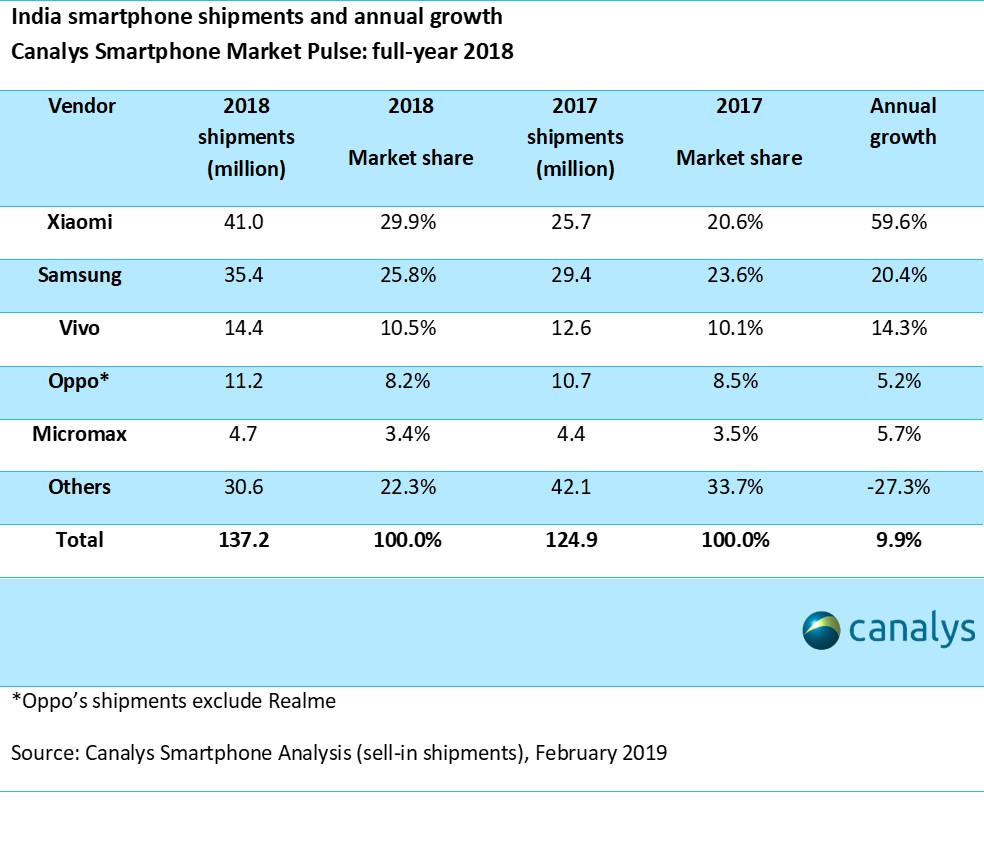
Women were some of the earliest programmers – here with a decryption system for the US Army. CC-licensed photo by brewbooks on Flickr.
You can sign up to receive each day’s Start Up post by email. You’ll need to click a confirmation link, so no spam.
A selection of 12 links for you. Happy Valentine’s day, keep on with the love. I’m @charlesarthur on Twitter. Observations and links welcome.
The secret history of women in coding • The New York Times
»
[Mary Allen] Wilkes remembered her junior high school teacher’s suggestion [from her geography teacher, who in 1950 said she should be a computer programmer]. In college, she heard that computers were supposed to be the key to the future. She knew that the Massachusetts Institute of Technology had a few of them. So on the day of her graduation, she had her parents drive her over to M.I.T. and marched into the school’s employment office. “Do you have any jobs for computer programmers?” she asked. They did, and they hired her.
It might seem strange now that they were happy to take on a random applicant with absolutely no experience in computer programming. But in those days, almost nobody had any experience writing code. The discipline did not yet really exist; there were vanishingly few college courses in it, and no majors. (Stanford, for example, didn’t create a computer-science department until 1965.) So instead, institutions that needed programmers just used aptitude tests to evaluate applicants’ ability to think logically. Wilkes happened to have some intellectual preparation: As a philosophy major, she had studied symbolic logic, which can involve creating arguments and inferences by stringing together and/or statements in a way that resembles coding.
Wilkes quickly became a programming whiz. She first worked on the IBM 704, which required her to write in an abstruse “assembly language.” (A typical command might be something like “LXA A, K,” telling the computer to take the number in Location A of its memory and load it into to the “Index Register” K.) Even getting the program into the IBM 704 was a laborious affair. There were no keyboards or screens; Wilkes had to write a program on paper and give it to a typist, who translated each command into holes on a punch card. She would carry boxes of commands to an “operator,” who then fed a stack of such cards into a reader. The computer executed the program and produced results, typed out on a printer.
«
To me, the remarkable person in this is the geography teacher in 1950. Why did they think of a woman being a computer programmer – a discipline that didn’t exist? The word “computer” mean “person who computes” at that time. Think about it too long, and you could start thinking it’s a meddling time traveller.
link to this extract
Apple invites Jennifer Aniston, Reese Witherspoon to video launch • Bloomberg
Anousha Sakoui and Mark Gurman:
»
The Cupertino, California-based technology giant is planning a March 25 event to announce both services, according to people familiar with the plan. The iPhone maker invited Hollywood stars, including Jennifer Aniston, Reese Witherspoon, Jennifer Garner and director JJ Abrams, to attend, one of the people said.
The video service is similar to Amazon.com Inc.’s Prime Video and Netflix Inc. products, and will include TV shows and movies either acquired or funded by Apple. The company has created dozens of original programs so far, but hasn’t wrapped them in a subscription yet. The paid service will launch by the summer, the people said. They asked not to be identified discussing private plans.
The company’s premium news service will be integrated into the Apple News app, letting consumers subscribe to a bundle of titles for a monthly fee. Some publishing executives are wary of taking part, Bloomberg News reported in December.
Final details are still being worked out, and Apple’s plans could change…
The magazine subscription service, which has been in testing with Apple employees for months, will launch as part of an iOS 12.2 update scheduled for release this spring. The updated Apple News app will include a Magazines tab similar to the app Texture, which Apple acquired last year.
«
Apple, Google in crosshairs for carrying app that lets Saudi men track wives • NPR
»
In Saudi Arabia, women’s lives are highly restricted. For example, according to Human Rights Watch, women have always needed permission from a male guardian, usually a father or husband, to leave the country. In the past, paper forms were required prior to travel.
The Absher app makes the process a lot more convenient for Saudi men. And it’s drawing criticism, especially from human rights advocacy groups…
…This week, Sen. Ron Wyden, D-Ore., sent a letter to both companies asking them to remove the app. “Saudi men can also reportedly use Absher to receive real-time text message alerts every time these women enter or leave the country or to prevent these women from leaving the country,” he wrote.
In an interview with NPR on Monday, Apple CEO Tim Cook was asked about Absher. “I haven’t heard about it,” he said. “But obviously we’ll take a look at it if that’s the case.”
NPR also reached out to Google, but the company has not responded…
Ironically, Absher has also been helpful to a few women trying to escape the repressive Saudi regime. [HRW senior researcher Rothna] Begum says some women have managed to secretly change the settings in the app on their male guardian’s phone so that it allows them to travel.
However, she says, Google and Apple need to push back against the Saudi government and either disable the app entirely or disable the features that enable men to track women in their families. “By not saying anything,” she says, “they’ve allowed the government to facilitate the abuse.”
«
How hard is it to have a conversation on Twitter? So hard even the CEO can’t do it • Recode
»
Twitter CEO Jack Dorsey and Recode co-founder Kara Swisher agreed to conduct an interview Tuesday on Twitter, and it had all the makings of a great read: the CEO of one of the most influential and controversial tech platforms in the world taking questions from one of the industry’s most ferocious reporters.
The only problem? No one could follow along.
Despite the public interview and a dedicated hashtag (#karajack) for the event, it didn’t take long before the dozens of tweets between the two started to get confusing. They were listed out of order, other users started chiming in, and there was no way to properly follow the conversation thread.
Swisher’s questions about Twitter’s complex abuse policies and Dorsey’s subsequent responses were floating around my timeline along with the regular tech news and opinions I always look at. If you wanted to find a permanent thread of the chat, you had to visit one of either Kara or Jack’s pages and continually refresh. It made for a difficult and confusing experience.
Dorsey even admitted so himself.
“I am going to start a NEW thread to make it easy for people to follow (@waltmossberg just texted me that it is a “chaotic hellpit”),” Swisher tweeted, referencing Recode’s other co-founder, the now-retired Walt Mossberg.
«
I think this is a misunderstanding. Twitter isn’t a real-time service in that way. This is trying to use a hammer as a saw.
link to this extract
Tracking sanctions-busting ships on the high seas • BBC News
»
For a long time, being out at sea meant being out of sight and out of reach. And all kinds of shenanigans went on as a result – countries secretly selling oil and other goods to countries they’re not supposed to under international sanctions rules, for example, not to mention piracy and kidnapping.
The problem is that captains can easily switch off the current way of tracking ships, called the Automatic Identification System (AIS), hiding their location.
But now thousands of surveillance satellites have been launched into space, and artificial intelligence (AI) is being applied to the images they take. There’s no longer anywhere for such ships to hide.
Samir Madani, co-founder of TankerTrackers.com, says his firm’s satellite imagery analysis has identified Iranian tankers moving in and out of port, despite US sanctions restricting much of the country’s oil exports. He’s watched North Korea – which is limited by international rules to 500,000 barrels of refined oil every year – taking delivery of fuel via ship-to-ship transfers on the open ocean.
Turning off the AIS transponders that broadcast a ship’s position, course and speed, is no longer a guarantee of anonymity.
His firm can even ascertain what cargo a ship is carrying – and how much – just by looking at its shadow on the water, says Mr Madani.
«
Tankertrackers is pretty cheap if you were into analysis of oil supply lines – $299 per year.
link to this extract
Dimensions.Guide: a database of dimensioned drawings
»
Dimensions.Guide is a comprehensive reference database of dimensioned drawings documenting the standard measurements and sizes of the everyday objects and spaces that make up our world. Created as a universal resource to better communicate the basic properties, systems, and logics of our built environment, Dimensions.Guide is a free platform for increasing public and professional knowledge of life and design.
«
Wow. It looks like a sort of Wikipedia of design elements – potentially, a fabulous resource.
link to this extract
Huawei accuses US of ‘political’ campaign against telecoms group • Financial Times
»
[Huawei chairman] Eric Xu questioned the US’s motives on Wednesday, pointing to Washington’s extensive surveillance programmes.
“Is [the US] truly thinking about cyber security and protecting the privacy of other countries’ citizens, or do they have other motives?” he said.
“Some say that because these countries are using Huawei equipment, it makes it harder for US agencies to obtain these countries’ data,” he added.
Mr Xu also revealed that Huawei would spend more than $2bn to restructure the code used in its telecoms services worldwide after a series of “confrontational” meetings with Britain’s cyber security agency over the issue.
The company is likely to face further criticism from the Huawei Cyber Security Evaluation Centre, the UK watchdog that reviews the company’s security systems, which last year noted the “repeated discovery of critical shortfalls” in the group’s technical processes. Last week, Huawei told the UK government it would take up to five years to address the concerns.
According to Mr Xu, the watchdog had demanded that Huawei rewrite the code it uses in telecoms products to be clearer and more readable, including legacy code written decades ago…
…Mr Xu also dismissed concerns about Huawei being blocked in Australia and New Zealand, saying: “The Australian market isn’t as big as [the Chinese city of] Guangzhou, and the New Zealand market isn’t as big as my hometown.”
«
IBM AI fails to beat human debating champion • Engadget
»
Champion debater Harish Natarajan triumphed in a live showdown against IBM’s Miss Debater AI at the company’s Think Conference in San Francisco on Monday. The 2012 European Debate winner and IBM’s black monolith exchanged quick retorts on pre-school subsidies for 25 minutes before the crowd hailed Natarajan the victor.
Each side was given 15 minutes to prep for the clash, after which they presented a four-minute opening statement, a four-minute rebuttal, and a two-minute summary. The 700-strong audience, meanwhile, was comprised of top debaters from Bay Area schools and more than a hundred journalists.
Miss Debater (formerly known as Project Debater) pulled arguments from its database of 10 billion sentences taken from newspapers and academic journals. A female voice emanating from the human-sized black box spouted its answers, while three blue balls floated around its display.
The face-off was the latest event in IBM’s “grand challenge” series pitting humans against its intelligent machines. In 1996, its computer system beat chess grandmaster Garry Kasparov, though the Russian later accused the IBM team of cheating, something that the company denies to this day – he later retracted some of his allegations. Then, in 2011, its Watson supercomputer trounced two record-winning Jeopardy! contestants.
In the lead-up to Monday’s bout, Natarajan suggested that debating may prove a harder battleground for AI than Go and video games. “Debating is…more complicated for a machine than any of those…” he wrote in a LinkedIn post.
«
Well I’d hope that debating was tougher than just stringing sentences together. Though I doubt Natarajan has any real idea of how hard Go or Dota 2 are for a machine or a human at the very top level.
link to this extract
How white space killed an enterprise app (and why data density matters) • UX Design
Christie Lenneville and Patrick Deuley:
»
The protagonist is a well-intentioned UX Designer at a large high-tech company who was given a new project: Redesign an internal control panel that was ugly, hard to learn, and stuffed full of content on every screen (so much data). Everyone agreed it needed modernization—it looked like it was from the early 2000s, after all!
So this designer set out to solve the problem, taking cues from modern consumer apps.
The new design simplified every screen. It broke apart huge pages into smaller, more focused ones. It used progressive disclosure to hide presumably insignificant information. And since today’s users don’t mind scrolling (ahem), the design incorporated white space in all of the usual places—around headers, content blocks, and in table rows. The breathing room was glorious.
It lasted one month before the company was forced to retire it.
Users absolutely hated the new system. Sure, the old system was ugly, but it had everything they needed, right at their fingertips! Their jobs were incredibly fast paced—they worked in a tech support call center and were rated on productivity metrics. They didn’t have time to click or scroll to find information while the clock was literally ticking.
In their eyes, this new system wasn’t an upgrade, it was a boondoggle. It wasn’t just a little frustrating—it made them mad.
«
But, as it explains, you can do better design for those awful enterprise apps.
link to this extract
Indian smartphone market grows 10% in 2018 • Canalys Newsroom
»
India remained one of the bright spots in an otherwise declining global smartphone market in 2018. Smartphone shipments in the country were up by more than 12m at 137m, the best growth of any market in absolute volume terms. India now accounts more than 10% of the world’s smartphone market, up from 6% five years ago. It is one of six markets in the top 20 that posted positive full-year growth, with its performance outshone by Indonesia (17.1%), Russia (14.1%) and Italy (10.0%). Of these four markets, India is the only one that has seen consecutive growth for the past three years.
In terms of vendors, Xiaomi took pole position for the first time in 2018, shipping 41.0m units to take 30% of the total Indian smartphone market. Despite being knocked off first place, Samsung still grew shipments by 20% and took a 26% share of the market. Vivo, Oppo and Micromax held third, fourth and fifth place respectively.
«
Notice the squeeze on “others” there.
link to this extract
UK smartphone shipments fell 14% in Q4 2018 • Strategy Analytics
»
Neil Mawston, Executive Director at Strategy Analytics, added, “Apple shipped 3.0 million smartphones and captured a dominant 41% marketshare in the UK during Q4 2018. Apple has a prestigious brand and extensive retail presence across the UK market. Despite a slight decline from a year ago, Apple’s grip on the UK smartphone market remains fairly tight and the iPhone has two times more marketshare than closest rival Samsung.”
Woody Oh, Director at Strategy Analytics, added, “Samsung clung on to second place with 19% smartphone marketshare in the UK during Q4 2018, down from 21% a year ago. Samsung’s UK smartphone marketshare has more than halved during the past six years. Samsung is facing intense competitive pressure from Huawei, who is targeting Samsung’s core segments in the midrange and premium-tier with popular models such as the P20. Huawei’s UK smartphone marketshare has leapt from 8% in Q4 2017 to 12% in Q4 2018. Huawei is growing fast in the UK, due to heavy co-marketing of its models with major carriers like EE.”
«
One other thing: Q4 is the biggest sales quarter of the year. Huawei is clearly eating Samsung’s breakfast, lunch and tea.
link to this extract
Dollar sales of smartwatches in the US are up 51%, totalling nearly $5bn • NPD
»
While Apple is the clear market leader, the new Smartwatch Total Market Report reveals that the top three brands (Apple, Samsung, and Fitbit) made up 88% of smartwatch unit sales during the timeframe. However, traditional watch manufacturers, like Fossil, and fitness-focused brands, like Garmin, are working to grow their share of the market, as they continue to expand into the smartwatch category.
“Over the last 18 months smartwatch sales gained strong momentum, proving the naysayers, who didn’t think the category could achieve mainstream acceptance, had potentially judged too soon,” said Weston Henderek, director, industry analyst for NPD Connected Intelligence. “The ability to be truly connected via built-in LTE without the need to have a smartphone nearby proved to be a tipping point for consumers, as they now recognize the value in being able to complete a wide range of tasks on the device including receiving notifications, messaging, accessing smart home controls, and more.”
Sixteen% of US adults now own a smartwatch, which is up from 12% in December of 2017, based on NPD’s Consumers and Wearables Report. The younger 18-34 age demographic is currently carrying the overall growth in the smartwatch market with 23% penetration.
«
Android/Wear OS has, at best, 12% on that basis (Samsung has its own GearOS). The modular approach just doesn’t work for smartwatches at this stage of the platform – if it ever will.
link to this extract
Errata, corrigenda and ai no corrida: none notified











